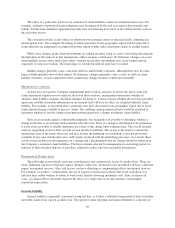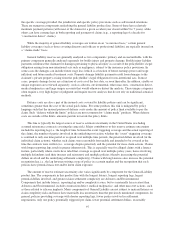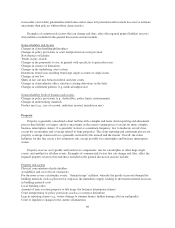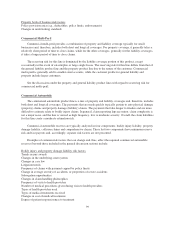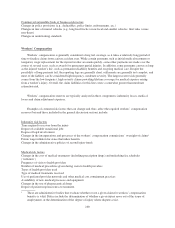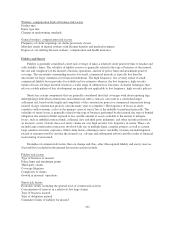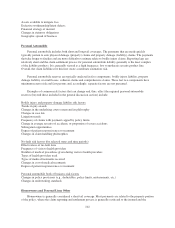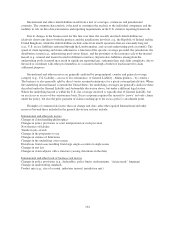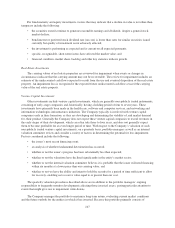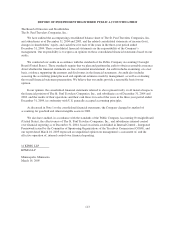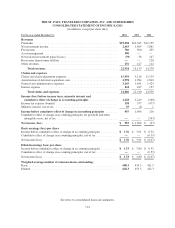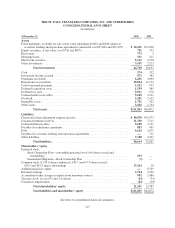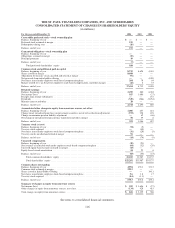Travelers 2004 Annual Report Download - page 118
Download and view the complete annual report
Please find page 118 of the 2004 Travelers annual report below. You can navigate through the pages in the report by either clicking on the pages listed below, or by using the keyword search tool below to find specific information within the annual report.Investment Impairments
Fixed Maturities and Equity Securities
An investment in a fixed maturity or equity security which is available for sale or reported at fair value is
impaired if its fair value falls below its book value and the decline is considered to be other-than-temporary.
Fixed maturities for which fair value is less than 80% of amortized cost for more than one quarter are
evaluated for other-than-temporary impairment. A fixed maturity is impaired if it is probable that the Company
will not be able to collect all amounts due under the security’s contractual terms.
Factors the Company considers in determining whether a decline is other-than-temporary for debt securities
include the following:
• the length of time and the extent to which fair value has been below cost. It is likely that the decline will
become “other-than-temporary” if the market value has been below cost for six to nine months or more;
• the financial condition and near-term prospects of the issuer. The issuer may be experiencing depressed
and declining earnings relative to competitors, erosion of market share, deteriorating financial position,
lowered dividend payments, declines in securities ratings, bankruptcy, and financial statement reports
that indicate an uncertain future. Also, the issuer may experience specific events that may influence its
operations or earnings potential, such as changes in technology, discontinuation of a business segment,
catastrophic losses or exhaustion of natural resources; and
• the Company’s ability and intent to hold the investment for a period of time sufficient to allow for any
anticipated recovery.
Equity investments are impaired when it becomes probable that the Company will not recover its cost over
the expected holding period. Public equity investments (i.e., common stocks) trading at a price that is less than
80% of cost for more than one quarter are reviewed for impairment. Investments accounted for using the equity
method of accounting are evaluated for impairment any time the investment has sustained losses and/or negative
operating cash flow for a period of nine months or more. Events triggering the other-than-temporary impairment
analysis of public and non-public equities may include the following, in addition to the considerations noted
above for debt securities:
Factors affecting performance:
• the investee loses a principal customer or supplier for which there is no short-term prospect for
replacement or experiences other substantial changes in market conditions;
• the company is performing substantially and consistently behind plan;
• the investee has announced, or the Company has become aware of, adverse changes or events such as
changes or planned changes in senior management, restructurings, or a sale of assets; and
• the regulatory, economic, or technological environment has changed in a way that is expected to
adversely affect the investee’s profitability.
Factors affecting on-going financial condition:
• factors that raise doubts about the investee’s ability to continue as a going concern, such as negative
cash flows from operations, working-capital deficiencies, investment advisors’ recommendations, or
non-compliance with regulatory capital requirements or debt covenants;
• a secondary equity offering at a price substantially lower than the holder’s cost;
• a breach of a covenant or the failure to service debt; and
• fraud within the company.
106


